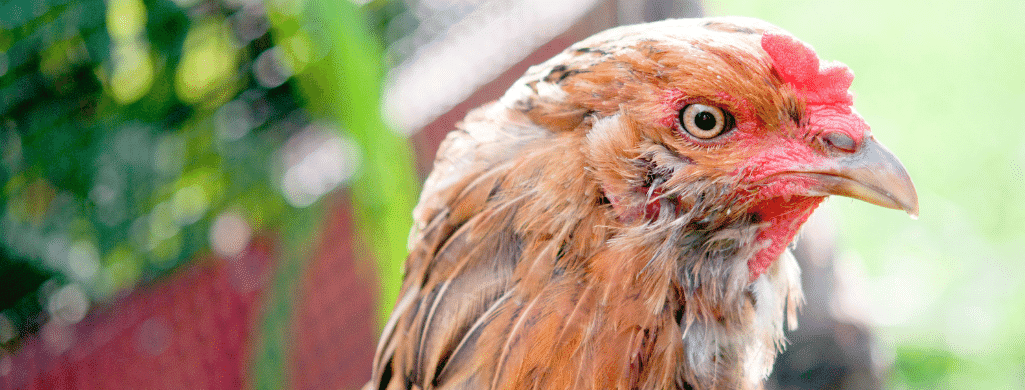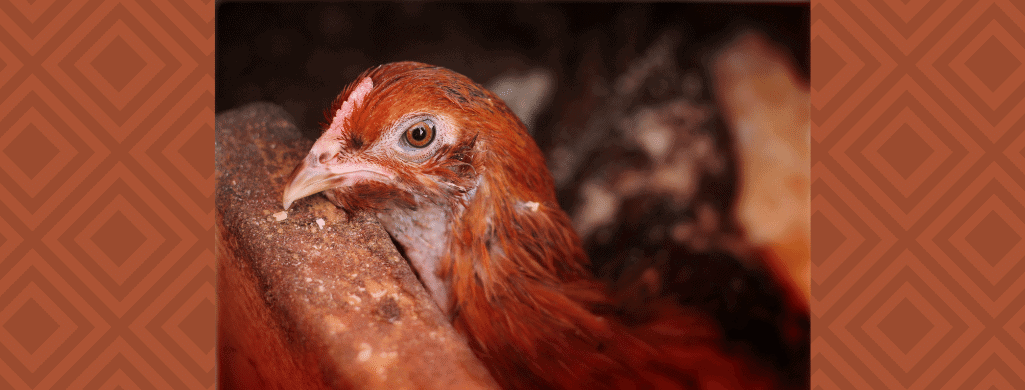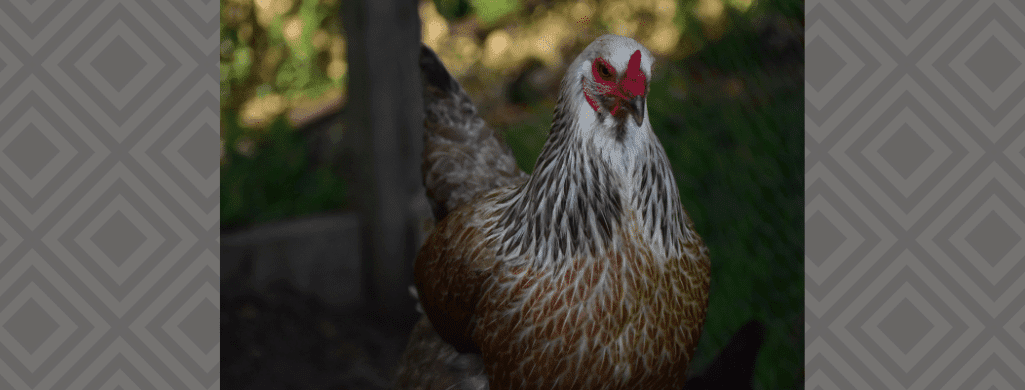Are you thinking of adding Ameraucana chickens to your backyard flock or commercial hatchery?
You need to provide plenty of space and proper nutrition to care for these incredible birds.
A complete and balanced diet will keep your chickens healthy and support egg production.
But what do Ameraucana chickens eat?
Ameraucana chickens have the same nutritional requirements as chickens in general. The majority of their diet should come from chicken feed. Choosing an appropriate feed mainly depends on a chicken’s age. All chickens need access to grit, and laying hens require supplemental calcium.

Table of Contents
ToggleNutritional Requirements of Chickens
Breeds of chickens come in a wide variety. But in general, all types of chickens have similar nutritional requirements.
Nutrition plays a powerful role in overall chicken health. Feeding a diet that meets all of your chickens’ nutritional requirements is important.
Chicken feed has six major components: carbohydrates, fat, protein, vitamins, minerals, and water.
As poultry, chickens need at least 38 essential nutrients.
Chickens need specific proportions of these nutrients depending on several factors, such as their age, environmental conditions, and function.
For example, chickens have higher energy demands when they are molting their multicolored feathers during the fall. Thus, their calorie and protein intake need to increase appropriately. An individual chicken’s energy needs vary.
For instance, backyard poultry expends more energy in cold temperatures. But an average chicken needs approximately 3200 kcal/kg.
A chicken’s function also affects its dietary needs. For instance, laying hens require more calcium in their food compared to roosters.
This additional calcium is necessary for layers to produce good-quality eggs.
In contrast, if roosters are fed a layer feed, the excess calcium may cause health problems like leg deformities.
All chickens must have constant access to clean water. Chicken keepers should check and change the water at least twice a day, so it stays fresh.
Ameraucana Chickens Do Not Have Unique Dietary Requirements
Ameraucanas are a popular American chicken breed among backyard keepers because of their friendly nature.
These prolific layers are especially known for their blue egg color. Ameraucana chickens have distinct breed standards, known for their heavy muffs, pea combs, and beard feathers.
But their nutritional requirements are no different from chickens in general.

Type of Chicken Feed to Choose Based on Age
Most of your Ameraucanas’ diet must consist of a complete and balanced chicken feed.
There is a wide range of chicken feed to choose from. In general, the type of feed to choose depends on the age of your chickens.
Nutritional recommendations and appropriate feed type based on age:
| Age and category of chicken | Protein requirement (%) | Calcium requirement (%) | Recommended feed type | Options available on Amazon |
|---|---|---|---|---|
| Chicks (0 to 8 weeks old) | 20 to 22 | 0.95 to 1.0 | 20 to 22% chick starter feed | Chick Starter and Grower |
| 7 weeks old until egg production | 17 to 18 | 0.85 to 0.95 | 17 to 18% grower or developer feed | Organic Grower Crumbles |
| Layers (approximately 18-20 weeks and older) | 16 to 18 | 3.5 to 4.5 | 16 to 18% layer feed | Chicken Feed |
| Roosters (7 weeks and older) | 18 | 0.85 | 18% grower feed | Organic Grower Crumbles |
Supplements for Your Ameraucana Chickens
An Ameraucana chicken’s diet should primarily come from an appropriate chicken feed. However, to raise a truly healthy chicken, you will also need to supplement its diet.
Chickens Need Grit
Chickens do not have teeth.
To help them digest their food, they have a muscle called the gizzard. To grind up their food, chickens need to ingest grit, which helps break down food in the gizzard.
Free-ranging birds have access to grit in the form of gravel or sand in their environment.
If your chickens are not free-ranging or lack sufficient grit in their environment, you will need to provide a grit supplement.
Related Post: Raising Ameraucana Chickens to Eat
Laying Hens Need a Calcium Supplement
Ameraucana hens need plenty of calcium to support healthy egg production.
Non-laying chickens only require about 1% calcium in their diets compared to layers which need about 3.5-4.5% calcium.
Feeding your blue egg layers higher dietary calcium levels results in better egg production and stronger eggs.
A common type of calcium supplement comes from oyster shells.
Chicken experts believe oyster shell supplements are desirable because of their large particles.
Larger particles stay in a chicken’s digestive tract longer, so more calcium is absorbed.
A calcium supplement may be offered free-choice for your laying hens. But your non-laying adult birds should not have access to this calcium supplement.
Just as insufficient calcium levels in layers may cause health issues, excessive calcium levels in non-layers may be harmful.

Treats for Your Chicken
A complete and balanced diet will mainly be comprised of chicken feed. But you may occasionally offer small amounts of treats.
Examples of treats include scratch and fresh vegetables and fruits.
Slightly increasing the number of treats you give your chickens is appropriate when they need more energy.
For instance, chickens require more energy to molt their fluffy feathers during the fall and to stay warm on cold winter nights.
Ameraucana Chickens Are Good Foragers
Ameraucana chickens are excellent foragers.
They tend to be active birds. These lovely birds enjoy free-range roaming throughout the day if given the opportunity and space.
To many people’s surprise, chickens are omnivores.
This means these adventurous chickens eat both plants and animals. As foragers, these curious birds may eat a surprising variety of critters.
The majority of a chicken’s diet should still consist of a complete and balanced chicken feed. But it is appropriate for these efficient foragers to supplement their diet with worms and insects.
A Chicken’s Diet Depends on Age and Function More Than Breed
Ameraucanas are a unique breed of chicken with their slate blue eggs and adorable muffs. But a chicken’s dietary needs are not based on its breed.
Rather, differences in nutritional needs mostly depend on a chicken’s age and whether it lays eggs.
Before you add these American birds to your flock, read up on more Ameraucana chicken facts.
Check out our explanations about whether Ameraucanas get along.
How useful was this post?
Click on a star to rate it!
We are sorry that this post was not useful for you!
Let us improve this post!
Tell us how we can improve this post?
